Showing Spotlights 17 - 24 of 68 in category All (newest first):
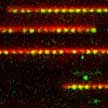 One reason why people are so excited about nanopore DNA sequencing is that the technology could possibly be used to create 'tricorder'-like devices for detecting pathogens or diagnosing genetic disorders rapidly and on-the-spot. Sequencing technologies have made it cheaper and faster to read the sequence of bases on a strand of DNA. A promising technology to take these advances further is nanopore sequencing. Yet, nanopores enable another important way to analyze DNA: genomes can also be mapped.
One reason why people are so excited about nanopore DNA sequencing is that the technology could possibly be used to create 'tricorder'-like devices for detecting pathogens or diagnosing genetic disorders rapidly and on-the-spot. Sequencing technologies have made it cheaper and faster to read the sequence of bases on a strand of DNA. A promising technology to take these advances further is nanopore sequencing. Yet, nanopores enable another important way to analyze DNA: genomes can also be mapped.
Nov 21st, 2016
 Presently, several techniques for detecting mRNAs are available,which include in situ hybridization and polymerase chain reaction. However, these single-point and end-point techniques require the killing of the cells and are thus unable to capture the expression of mRNA in real time and locality with high precision. In new work, scientists describe a new way of preparing functional DNA nanostructures that can provide accurate quantification and visualization of mRNA transcripts in living cells.
Presently, several techniques for detecting mRNAs are available,which include in situ hybridization and polymerase chain reaction. However, these single-point and end-point techniques require the killing of the cells and are thus unable to capture the expression of mRNA in real time and locality with high precision. In new work, scientists describe a new way of preparing functional DNA nanostructures that can provide accurate quantification and visualization of mRNA transcripts in living cells.
May 6th, 2015
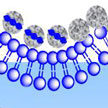 Biomineralization is the formation of inorganic materials in a biological environment, as it is found in bones, teeth and shells. Certain biominerals are also often associated with pathogeneses of tissues. The correlation of the composition of biominerals with pathogeneses of tissues has not been investigated systematically. In new work, researchers examine how the composition of biominerals correlates with the production of inflammatory cytokines associated with the stimulation of intracellular DNA sensors and by biominerals themselves.
Biomineralization is the formation of inorganic materials in a biological environment, as it is found in bones, teeth and shells. Certain biominerals are also often associated with pathogeneses of tissues. The correlation of the composition of biominerals with pathogeneses of tissues has not been investigated systematically. In new work, researchers examine how the composition of biominerals correlates with the production of inflammatory cytokines associated with the stimulation of intracellular DNA sensors and by biominerals themselves.
Apr 22nd, 2015
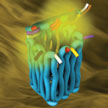 Research related to molecular logic gates is a fast growing and very active area and molecular devices have become the new frontier in computing. Researchers now have designed and synthesized self-assembled DNA complexes that sense two environmental signals and produce a fluorescent outputs corresponding to the operation of all six Boolean logic gates AND, NAND, OR, NOR, XOR, and XNOR. This study could help improvements in the fields of molecular computation and intelligent drug delivery.
Research related to molecular logic gates is a fast growing and very active area and molecular devices have become the new frontier in computing. Researchers now have designed and synthesized self-assembled DNA complexes that sense two environmental signals and produce a fluorescent outputs corresponding to the operation of all six Boolean logic gates AND, NAND, OR, NOR, XOR, and XNOR. This study could help improvements in the fields of molecular computation and intelligent drug delivery.
Apr 20th, 2015
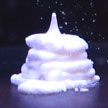 Designing systems that build themselves is one of the great dreams of nanotechnology researchers, and they are taking great strides towards developing such 'bottom-up' nanotechnology fabrication techniques. Fabrication processes based on DNA might change this: DNA origami have been heralded as a potential breakthrough for the creation of nanoscale devices. Researchers have now developed methods to assemble DNA-functionalized microparticles into a colloidal gel, and to extrude this gel with a 3D printer at centimeter size scales.
Designing systems that build themselves is one of the great dreams of nanotechnology researchers, and they are taking great strides towards developing such 'bottom-up' nanotechnology fabrication techniques. Fabrication processes based on DNA might change this: DNA origami have been heralded as a potential breakthrough for the creation of nanoscale devices. Researchers have now developed methods to assemble DNA-functionalized microparticles into a colloidal gel, and to extrude this gel with a 3D printer at centimeter size scales.
Jan 29th, 2015
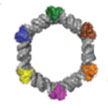 There is a significant need for new therapeutic approaches to combat diseases such as cancer and viral infections. Using RNA as a therapeutic modality brings to bear an entirely new approach, which not only allows for the construction of uniform scaffolds for attachment of functional entities, but also permits the use of all the different types of functionalities that are inherent in natural RNAs. New research demonstrates that multifunctional RNA nanoparticles with a nanoring design allow the use of different types of functionalities inherent in natural RNAs.
There is a significant need for new therapeutic approaches to combat diseases such as cancer and viral infections. Using RNA as a therapeutic modality brings to bear an entirely new approach, which not only allows for the construction of uniform scaffolds for attachment of functional entities, but also permits the use of all the different types of functionalities that are inherent in natural RNAs. New research demonstrates that multifunctional RNA nanoparticles with a nanoring design allow the use of different types of functionalities inherent in natural RNAs.
Oct 13th, 2014
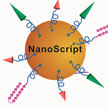 Gene transcription is tightly regulated by proteins called transcription factors. These transcription factor (TF) proteins are master regulators of transcriptional activity and gene expression. Transcription factors are responsible for transcribing the correct genes and therefore for producing the right quantity of proteins. TF-based gene regulation is a promising approach for many biological applications, however, several limitations hinder the full potential of TFs. To overcome these problems, an international team of researchers has developed an artificial, nanoparticle-based transcription factor, termed NanoScript, which is designed to mimic the structure and function of TFs.
Gene transcription is tightly regulated by proteins called transcription factors. These transcription factor (TF) proteins are master regulators of transcriptional activity and gene expression. Transcription factors are responsible for transcribing the correct genes and therefore for producing the right quantity of proteins. TF-based gene regulation is a promising approach for many biological applications, however, several limitations hinder the full potential of TFs. To overcome these problems, an international team of researchers has developed an artificial, nanoparticle-based transcription factor, termed NanoScript, which is designed to mimic the structure and function of TFs.
Aug 28th, 2014
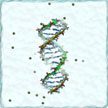 Cytosine (C) modifications such as 5-methylcytosine (mC) and 5-hydroxymethylcytosine (hmC) are important epigenetic markers associated with gene expression and tumorigenesis. However, bisulfite conversion, the gold standard methodology for mC mapping, can not distinguish mC and hmC bases. Recent studies have demonstrated hmC detection via peptide recognizing, enzymes, fluorescence and hmC-specific antibodies - nevertheless, a method for directly discriminating C, mC and hmC bases without labeling, modification and amplification is still missing. New results demonstrate that single base of C, mC and hmC can be discriminated at the latch zone of a nanopore.
Cytosine (C) modifications such as 5-methylcytosine (mC) and 5-hydroxymethylcytosine (hmC) are important epigenetic markers associated with gene expression and tumorigenesis. However, bisulfite conversion, the gold standard methodology for mC mapping, can not distinguish mC and hmC bases. Recent studies have demonstrated hmC detection via peptide recognizing, enzymes, fluorescence and hmC-specific antibodies - nevertheless, a method for directly discriminating C, mC and hmC bases without labeling, modification and amplification is still missing. New results demonstrate that single base of C, mC and hmC can be discriminated at the latch zone of a nanopore.
Aug 15th, 2014
 One reason why people are so excited about nanopore DNA sequencing is that the technology could possibly be used to create 'tricorder'-like devices for detecting pathogens or diagnosing genetic disorders rapidly and on-the-spot. Sequencing technologies have made it cheaper and faster to read the sequence of bases on a strand of DNA. A promising technology to take these advances further is nanopore sequencing. Yet, nanopores enable another important way to analyze DNA: genomes can also be mapped.
One reason why people are so excited about nanopore DNA sequencing is that the technology could possibly be used to create 'tricorder'-like devices for detecting pathogens or diagnosing genetic disorders rapidly and on-the-spot. Sequencing technologies have made it cheaper and faster to read the sequence of bases on a strand of DNA. A promising technology to take these advances further is nanopore sequencing. Yet, nanopores enable another important way to analyze DNA: genomes can also be mapped.
 Subscribe to our Nanotechnology Spotlight feed
Subscribe to our Nanotechnology Spotlight feed





